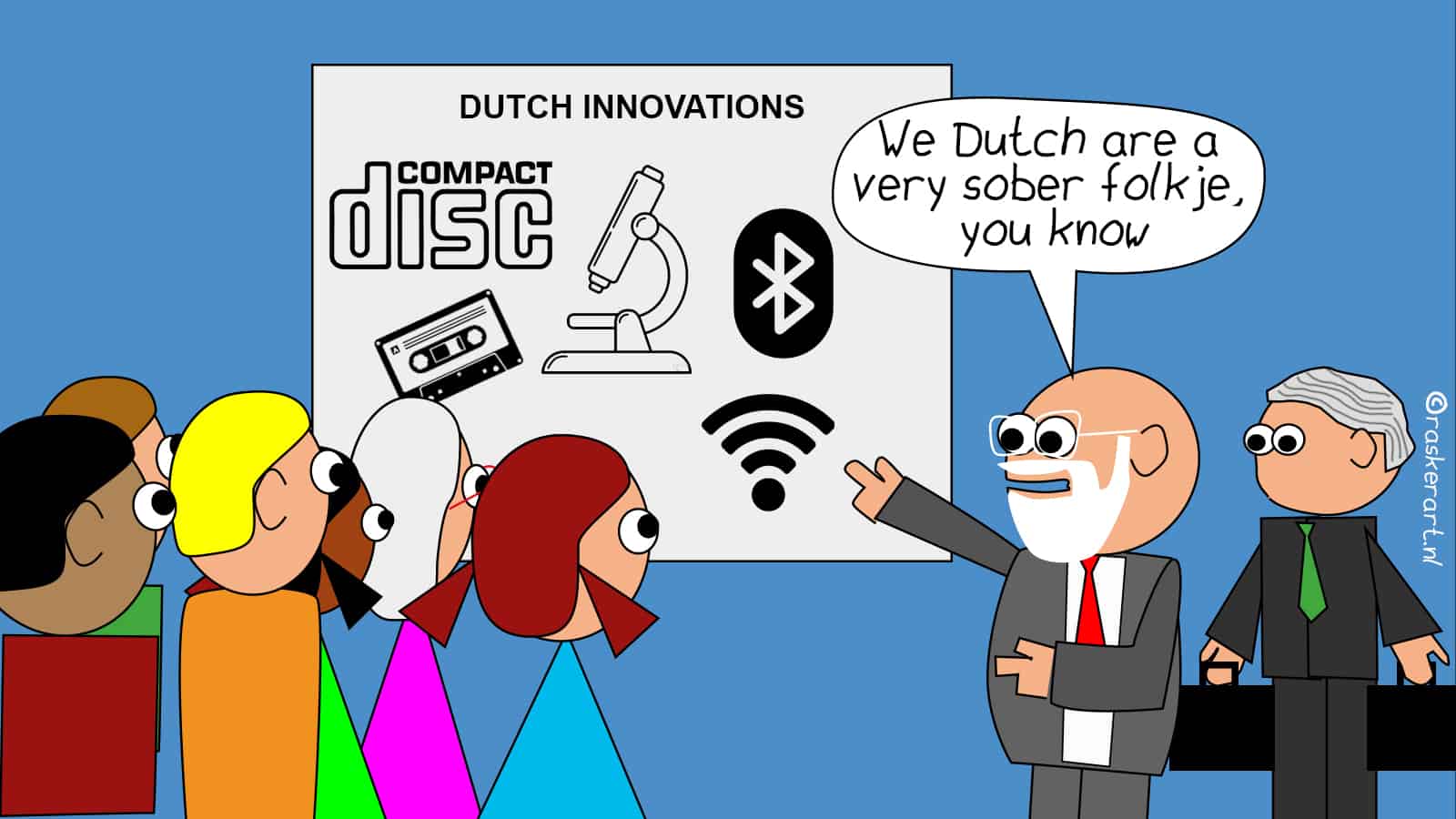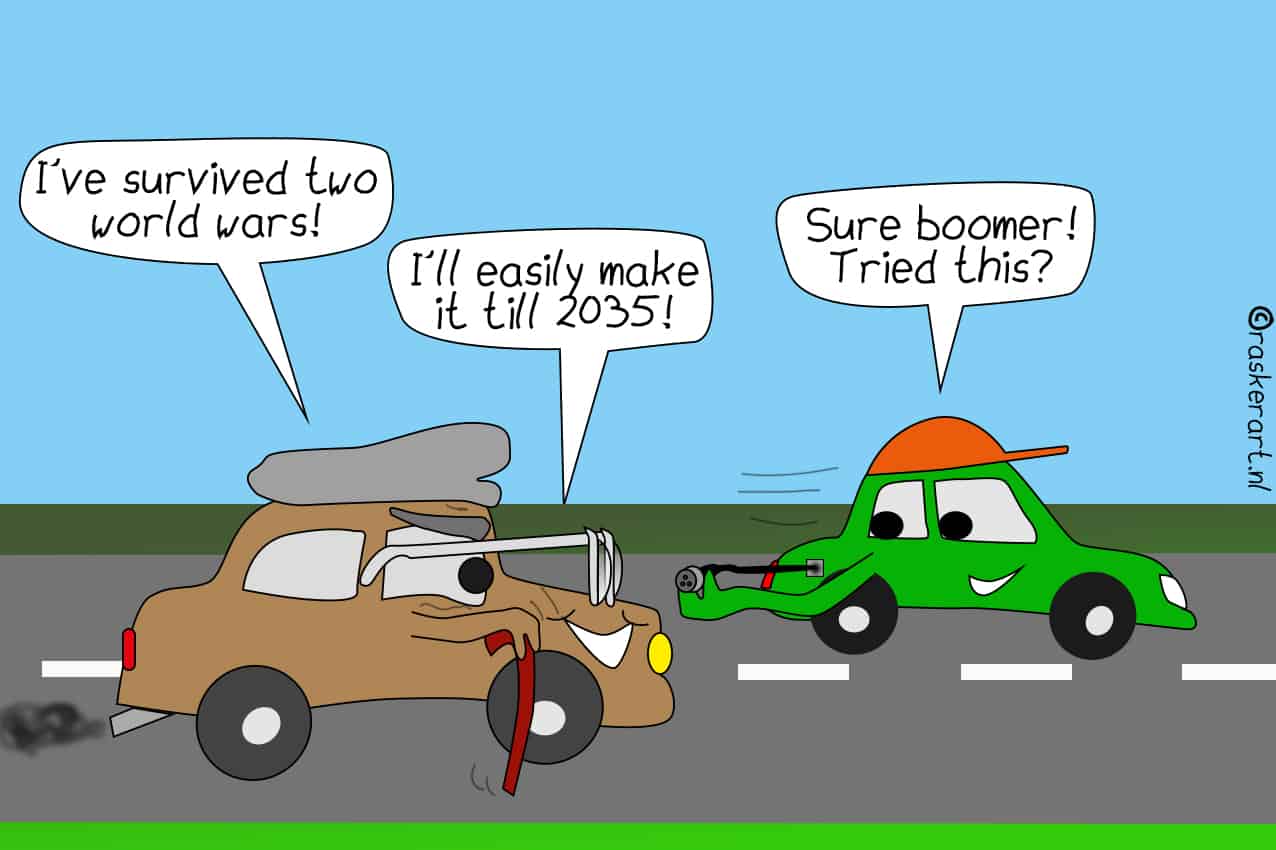
In our Sunday newsletter, we, as editors, reflect on the past seven days. We do this on the initiative of our cartoonist Albert Jan Rasker. He chooses a subject, draws a picture, and we take it from there.
Last month, I flew to China and the United Arab Emirates (UAE) for press trips. It was my first time in both countries, and I spent most of the time indoors, in conference rooms (to clarify, my impression is fleeting). What impressed me the most was that China and the UAE have rampant innovation and development.
China is highly digitized. Everything is arranged through one app: in Alipay, you order groceries, make a doctor’s appointment, and book a cab. To get an idea, I recommend this report by Stephan Petermann for Dutch Magazine VrijNederland. He wrote down what a “digital” day looks like in China. “The doctor makes a diagnosis via video chat and ensures the medicine is delivered within 28 minutes. The goal seems to be never having to get up from your chair.” Mind you, the article is from 2019.
And then Dubai. The city is in 2050 already. In addition to modern towers, in three years, residents should be able to get from A to B – wherever they are in the center – within seven minutes using AI.
Overload of rules
The feeling that an overload of rules stands in the way of innovation in the Netherlands and Europe crept up on me intensely. Take the theme of last week’s overview: the power grid dilemma. There are many solutions, but laws and habits get in the way. Or our government’s severely outdated digital infrastructure, which Alexander Klöpping sounded the alarm in Dutch newspaper NRC this week. He compares it to an “old, dilapidated house that no one dares touch for fear it will collapse. One reason? Too many rules.
For rapid digitization, innovations and Chinese and Emirati pay a high price (at least, from a Western perspective). An authoritarian government in which one leader, through patronage, oppression, and traditional legitimacy, determines top-down where the country goes.
And often enough, regulation in Europe also leads to good things. For example, colleague Bart Brouwers wrote about a study that contrasted the impact of U.S. and E.U. impact investment markets. What emerged? Among other things, European regulations make the European impact investment market grow. In Europe, we have more impact funds AND impact investors than in America. So, as Albert Jan Rasker nicely shows in his illustration, the preconception that the U.S., by definition, has a better investment climate can be scrapped.
Here’s what else struck us this week:
- The Dutch are back at it: pioneering aviation a century later, now using hydrogen
- Green lithium for greener cars: Vulcan has found the recipe
- As resistance grows in Europe, Huawei assures its commitment to winning the 6G race
- People remain indispensable in high-tech
- Levitating trains revolutionize rail travel: Nevomo’s MagRail challenges Hyperloop’s promise
- China’s BYD exudes self-confidence: ‘We do everything differently’
- The future of cargo transportation: Drone with 100kg capacity
And here you’ll find the rest of the articles we wrote last week. Have a great, innovative week.
Aafke Eppinga editor-in-chief Innovation Origins
P.S.: we are working hard on the second edition of our magazine IO NEXT. It’s all about our brains. Don’t forget to subscribe. Our first free first copy is already available!






